#Impact of Sword and Sorcery in Pop Culture
Text
Exploring The Evolution of Sword and Sorcery Genre
[et_pb_section fb_built=”1″ admin_label=”section” _builder_version=”4.16″ global_colors_info=”{}” theme_builder_area=”post_content”][et_pb_row admin_label=”row” _builder_version=”4.16″ background_size=”initial” background_position=”top_left” background_repeat=”repeat” global_colors_info=”{}” theme_builder_area=”post_content”][et_pb_column type=”4_4″ _builder_version=”4.16″ custom_padding=”|||”…

View On WordPress
#Sword and Sorcery Evolution#Fantasy Genre Development#Sword and Sorcery Origins#Popular Sword and Sorcery Authors#Evolution of Hero Archetypes#Sword and Sorcery Themes#Swords and Magic Evolution#Historical Fantasy Trends#Sword and Sorcery Subgenres#Impact of Sword and Sorcery in Pop Culture
1 note
·
View note
Note
Hi. Just found your blog--greatly enjoy your writing! Now, a question: Are there any popular female pulp heroes? What were they like? Thx in advance.
Thanks! Well, popular is a strong word, most people start with asking "were there any female pulp heroes? like, at all?", the answer to which is, Yes!...Nowhere as much as there were male ones, and not in the traditionally accessed avenues for "pulp heroes", but yes, there were, I wrote a bit about them here. Not counting the female sidekicks of male pulp heroes because that's cheating, the most popular female pulp heroes are the ones that exist by proximity to that American pulp hero “scene”, which I must stress again, doesn’t really have that much to do with what pulp fiction was actually like during it’s heyday, but rather that amorphous concept of what people imagine a pulp hero to be like.
In that regard, a popular female pulp hero would have to be a character that managed to break through in some form and inhabit that pop culture archetypal space in some form, or at least linger around in some noteworthy fashion. To an extent, this is something that was achieved more by female villains, in particular H.Rider Haggard’s Ayesha as well as other characters like Shamblau, Black Margot / Princess Margaret of the Black Flame, and Irma Vep who made for memorable, impactful villains of popularity and status approaching that of the male heroes.
With that in mind, upfront I’d argue that there’s at least six unambiguously popular female pulp heroines, and those would be:
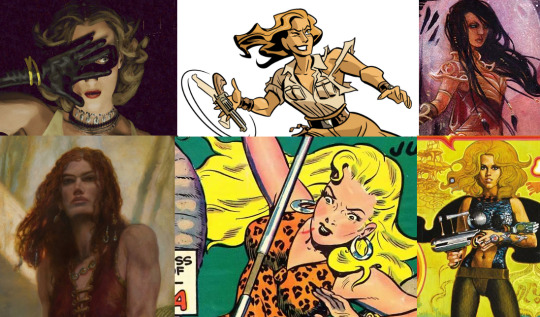
The Domino Lady, a masked Gentleman Thief who was a rare example of a female masked vigilante who was actually published in 1930s American pulp fiction. The Domino Lady is, predictably, the least popular of these, but she’s historically significant and fairly popular in her own right and usually featured in stories or images that place all the masked avengers together.
Pat Savage (illustration by Dan Schkade), Science Adventurer Doc Savage’s rowdy tomboy cousin, and Dejah Thoris, the famous princess of Mars from the John Carter saga (key progenitor of the Planetary Romance subgenre), who are kind of on the sidekick side of things, but there's been enough solo outings for them, and the two of them being fairly significant and influential characters in their own right, that I’m obviously not gonna leave them out.
Red Sonja (illustration by Donato GIancola), famed badass of Sword-and-Sorcery. She’s maybe the most famous by far pulp heroine of them all, the only one of these for sure that you could reasonably expect most people to at least know by name or imagery. And she is a 1970s Marvel Comics character who borrows her name from an unrelated character in a non-Conan Robert E. Howard story and her characterization from C.L. Moore’s Jirel of Joiry (1934). Another character we can add to the ever-growing pile of “characters who define the term pulp hero despite never actually appearing in pulp fiction” next to The Spirit, Buck Rogers, The Phantom, The Green Hornet, etc.
Sheena, Queen of the Jungle: Here also standing for the general popularity of Jungle Girls in general who usually take after her in some ways or inspired her in the first place they all just kinda blend together at some point
Barbarella: (no idea what archetype taxonomy I could use for her). You all know or have heard of her at some point and she gets grouped with these characters so often I couldn’t really omit her either. I’ve never seen the movie but I know it is an Italian production based on an erotic French comic that shoots for an American comic book style, and that strangeness is part of what made it fairly memorable. I’ve read a couple of Tales of the Shadowmen collections that feature stories with her as well.
Having named these, I’m also going to name six other pulp heroines who do not follow that mold so strongly and don’t overlap with these, and who were popular and significant in different ways:
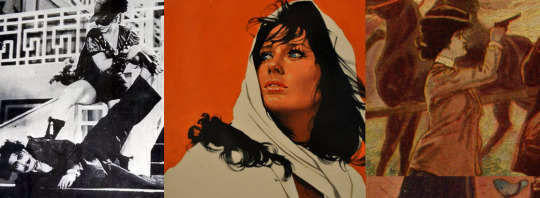
Hunterwali: Hunterwali is one of the most significant action heroines in film history, as she was the premier starring role for Fearless Nadia, the most iconic action hero of 1930s Indian cinema and the archetypal action actress for Indian films, really one of the earliest and most significant action movie actresses period. Inspired by the Douglas Fairbanks Robin Hood serials, Hunterwali (1935) was a record-breaking blockbuster, with the character said to be “the most popular character of its time” and listed as "Bollywood's best loved character" in 100 years of Indian cinema by CNN-IBN”.
The character is a swashbuckling princess who dons the guise of Hunterwali, "protector of the poor and punisher of evildoers", to become a swashbuckling Masked Avenger bent on rescuing her father and beat up the evil prime minister villain. She runs around on horseback performing stunts like jumping over moving carriages, jumping a horse from a bridge onto the top of a moving train, and defeating 20 soldiers in one sweep with her whip (Fearless Nadia did her own stunts, mind you).
Brigitte “Baby” Montfort: Brigitte Montfort was a highly popular Secret Agent pulp fiction character in Brazil, probably the most straightforward “pulp hero” we have as the star of cheaply printed pocket edition books that arose in the 60s as an alternative to the paperbacks. Brigitte is the daughter of a 1940s feuilleton character (yes, the feuilletons were published here as well) named Giselle Montfort, a Mata Hari-esque spy who bedded Nazis for intel and was eventually killed via firing squad. Brigitte was a globetrotting reporter who secretly operated as a cunning, cutthroat CIA agent, a bikini-clad James Bond. The stories went so in-depth that it was a common rumor at the time that they were written by a CIA agent employed by the editors, and Brigitte lasted about 30 years with circa 500 novels to her name, making her one of the most long-lived pulp characters.
Ethel King: Ethel King was a rare, prototypical Great Detective who debuted in German dime novels and was subsequently published all over Europe for the following two decades. Driven to fight crime by the loss of her father and fiance, she was referred to as “the female Sherlock Holmes” as well as “the female Nick Carter” for French and Italian publishing, and she takes after the two of them in a way.
Like Holmes, she employs brilliant reasoning and goes around with a wisecracking assistant (in this case her governess), and like Carter, she’s also assisted by a younger sidekick (an orphaned cousin she raised on her own), she gets into gunfights and has a tough attitude, and she deals with a massive Rogues Gallery of horrid villains with wild names and even wilder characters (including three evil doppelgangers). She would go on to become a formative influence not just on future female detectives, but also the German hefteromanes that spun out of the dime novels.
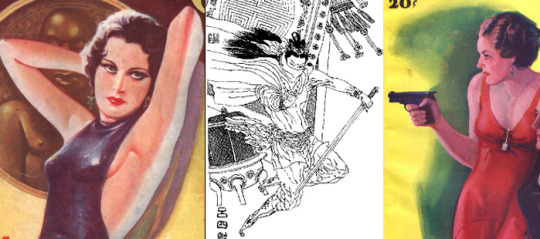
Nila Rand: Perfume, pistols and mystery in one package, she was created by Hedwig Langer under a pseudonym, one of the only two characters in this list created by a woman. Nila Rand was a thrill-seeking adventurer Femme Fatale featured in Scarlet Adventuress who dabbled in arms dealing, smuggling of stolen goods and gunfighting.
"She did not know which intrigued her the more, the alluring promise of exotic love, or the threat of terrible and violent death. The last was as necessary to her as the first. Nila Rand had played too long for high stakes and it needed the element of danger to make the game a thrilling one." - The Shanghai Stakes (1935)
Nila is a key example of what separates the femme fatale in the pulps from the films (far more frequently protagonists, rarely the sidekicks or girlfriends but instead solo operatives or leaders of their own gangs, rarely deliver on actual sex and instead manipulate men's desires to their advantage), but far more important than that is the fact that she was openly acknowledged to be bisexual, which goes without saying was extremely rare in any form to find in the pulps in any form.
Even in these spicy/erotic pulp magazines that were all about sneaking stuff past the radar (and thus a place where, for better or worse, writers could play around with topics other magazines would shy away from and would be unthinkable outside of pulp magazines). Finding a queer pulp hero from any period prior to the 1970s, let alone a protagonist and not an outright villain, is bordering on impossible, but it exists and here she is.
Lu Siniang: A lot of Wuxia/Nuxia storytelling is born from similar undercurrents of working class escapism and anger and desire for justice that led to many of pulp fiction’s most prominent heroes, and Lu Siniang is a particularly powerful embodiment of that. She was spun out of real life circumstances involving the execution of Lu Liuliang and his entire family for “literary crimes” against the Qing government, and the subsequent death of the Yongzheng Emperor, and said to be Liuliang’s daughter who had managed to survive away, learn martial arts and join/form a group of revolutionaries in a mission of revenge that culminated in her skewering/beheading the emperor. No Wuxia/Nuxia protagonist had dared to go that far before.
The story was reprinted several times following it’s inception, becoming particularly popular in the 1910s-1940s as the character would star in the Lu Siniang / Fourth Madam Lu serials starting in 1940, that comprised the first Chinese film franchise and film series about a fictional character, as well as one of the first action film series focused on a female protagonist alongside Hunterwali mentioned above.
Pussy Fane: The only other character in the list created by a woman. She was created by prolific romance writer and editor Jane Littel, who was repeteadly stressed to be the "longtime companion" of another pulp romance writer Margaret Wallace (one of the pseudonyms Margaret wrote under was called "Margaret Littell", make of that what you will), with Pussy Fane being a short-lived attempt to combine crime and romance.
Pussy Fane is a Proto-Superhero from 1931, a beautiful escort/party girl who grew up in the circus among jungle cats and is forced to deal with blackmailers and gangsters. She regularly douses herself in perfume to mask their scent, and is burdened with regret and sorrow over her upbringing and nature, repeteadly hearing others refer to her as inhuman and more than half cat. She is also superhumanly strong and athletic, said to have the strength of 20 men, and she also regularly rips off the arms of would-be-rapists.
Yes, it’s a tragedy you’re only just now hearing about this character, it’s a damn shame the stinky classy-yet-feral woman who runs around ripping off the arms of grubby rapist gangsters missed her call in pop culture stardom as did so many of these.
So here there are, 12 female pulp heroes all encompassing different archetypes, as well as different genres and countries of origin. There are more, yes. They are difficult to find enough info to write about, yes. Is the effort worth it? You bet. I find it imperative to shout to the world that these characters and others like them existed, that plenty of them were popular and acclaimed in their own right, even in ways that overshadow the American characters and defy our pop culture preconceptions of what pulp female characters all have to look like.
There was no archetype or type of story available to pulp heroes that was closed off to the women, not now, not a hundred years ago when Ethel King established new paradigms for the Great Detective and dime novel fiction before Hunterwali made action film history doing everything Douglas Fairbanks was doing and then some, not even well over a hundred years ago when Lu Siniang was beating The Count of Monte Cristo and all the ensuing dramatic masked avengers to the punch in backstory and over-the-top revenge. We only stand to lose confining these to the dustbins of history and standing by such a shallow perception of what could be done, and what was done, back then with pulp heroines.
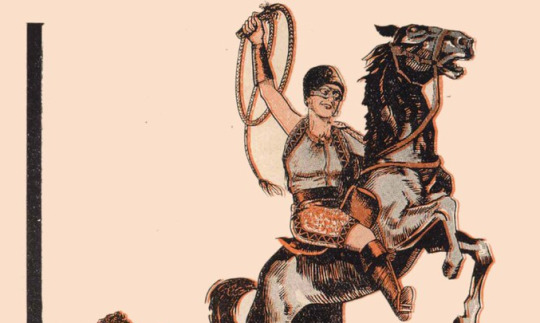
#replies tag#pulp heroes#pulp heroines#pulp fiction#film serial#domino lady#pat savage#dejah thoris#red sonja#sheena#barbarella#hunterwali#fearless nadia#brigitte montfort#ethel king#nila rand#lu siniang#pussy fane#american pulp heroes#indian pulp heroes#german pulp heroes#wuxia#nuxia#brazilian pulp
100 notes
·
View notes
Text
Dating Disney: The Hunchback of Notre Dame

It’s been a while since I’ve done a dating Disney, so this is a return to form. Except this one is going to be super easy because the date is spelled out very clearly in the book. The story begins on January 6, 1482. This is even mentioned directly in the lyrics of “Topsy Turvy” which states “ Scurvy knaves are extra scurvy | On the 6th of January | All because it's Topsy Turvy Day.” So our story is set at Notre Dame in Paris, France on the 6th of January, 1482. The film opens on January 6th, and there are about 2-3 nighttime scenes when Quasi and Esmeralda discuss their palms, Quasi and Phoebus go looking for Esmeralda, and the Battle of Notre Dame, though it’s uncertain if the Battle takes place at night or if the smoke of Paris burning makes it seem like night time. So the film ends on either January 8th or January 9th, 1482. Now, it’s time to compare to actual history.
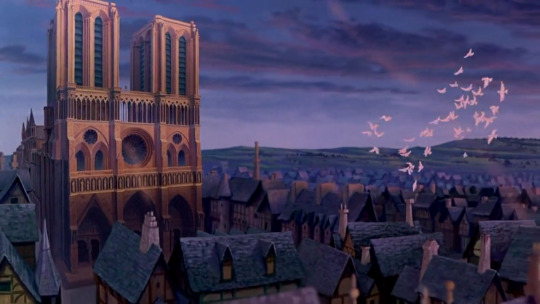
The Cathedral of Notre-Dame
Notre-Dame de Paris is a catholic cathedral whose construction began in 1163. The structure was largely completed in 1260, but the model we know today was finished in 1345. Each of the rose windows were installed between 1225-1260. Still, the structure as shown in the film would be consistent with our 1482 setting.

Le Palais de Justice
The Palace of the City was constructed in 1240 and saw reconstruction from 1857-1868.

The Romani People
From what I’ve found thus far, it seems the Romani people migrated from North-Central India and first appeared in France around 1419, so thus far, still accurate. Due to the cultural drift of over four centuries, it’s unclear if the Romani of the time knew their Indian roots or deliberately hid it, but most Romani that entered Europe referred to themselves as having Egyptian origins. It seems the majority of Romani people who entered France earned the moniker of “Bohémien” due to arriving in France with letters of protection provided by Sigismund of Luxemburg, The Holy Roman Emperor, and King of Bohemia. The slur of G*psy is inaccurate and anachronistic, as it is the English name for the Romani derived from their believed Egyptian heritage. However, the Romani did not arrive in England until 1514. So they should be using the term Bohémien or Égyptien[ne]. instead. Because of their nomadic nature, the Romani needed a lifestyle that could travel with them. Romani women often read fortunes and sold herbal medicines, which that Catholic Church lumped in as witchcraft, causing the Romani people to become distrusted by Christians as devil-worshiping exotic foreigners come to leech off of “good God-fearing society” and tempt the white man with their devilish tricks and sorcery. This likely has a major impact on why most pop culture depictions of the g*psy stereotype almost exclusively are women, as the men did not partake in these practices, and thus do not have the same mystic witch parallels that the women have. Still the idea that the Romani are lying thieves who beg for money and swindle people affects all Romani, even to this day. Please note, this information is based on what I could find in my research, and is not infallible, all encompassing, and there may be further details regarding the history of the Romani people in Paris that I simply did not have access to.

The Gargoyles
The Gargoyles don’t exist. That’s literally the only way you can watch this movie is if you pretend they’re all figments of Quasi’s imagination. They bog down the film, put the tone in a choke hold, and chew the scenery. They’re also single-handedly responsible for most, if not all of the anachronisms in this film. Just pretend they aren’t real, and maybe you’ll be able to preserve your sanity. Pulling pianos and poker chips out of fat air. But the playing cards aren’t totally inaccurate. The patterns we recognize today as the standard 52 card deck emerged in Rouen, France in the 15th century. So the cards might be a newer invention, but they likely would have existed in 1482.
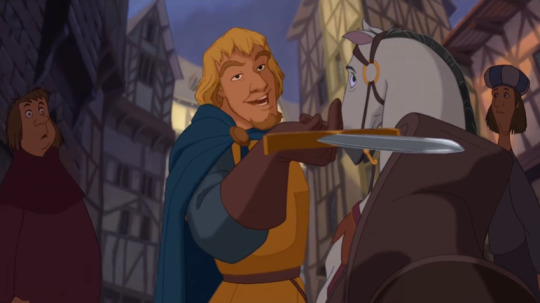
Phoebus only needs to brandish a sword for the guards to instantly recognize him as their captain. While I don’t remember the exact year this became a standard, it was relatively common practice in Medieval Europe for only soldiers, guards, and nobility to carry arms, while peasants were strictly prohibited.
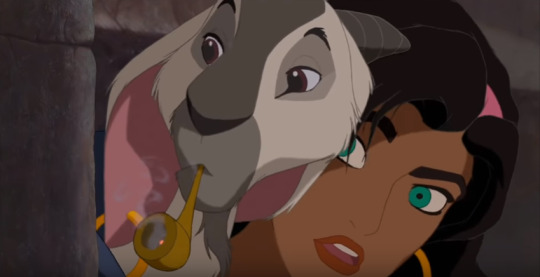
After escaping the guards, we see Djali smoking a pipe. However, this is inaccurate, as Tobacco was a discovery of the New World, and Columbus sailed the Ocean Blue in 1492, a decade after this movie. Granted, he never landed in America, but that’s besides the point. Tobacco would not yet be available in Europe. I suppose it’s possible the pipe could be used to smoke something else, but going by Occam’s razor, I’ll have to chalk this up as an anachronism.
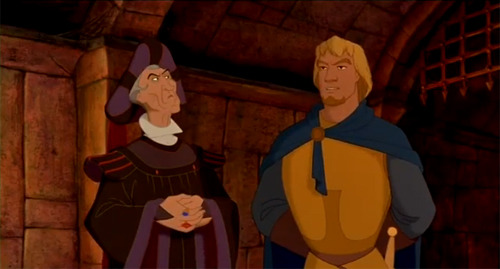
Captain Phoebus is called from “The Wars” to be Frollo’s peacekeeper in the City of Paris. These wars are never given a name, so I took a look at a list of wars involving France and see what Phoebus may be referring to. What he may be referring to is the Bergundian Wars of 1474-1477. But as you may notice, that conflict would not be congruent with the year. The Mad War also involved France, but that war began in 1485, three years after the film. France was involved at the Battle of Guinegate in 1479. But again, none of these wars would be on-going during the film. So, maybe they’re referring to one of the many crusades? Unfortunately, the only Crusades happening in 1482 is the Reconquista, which was a period lasting 781 years from 711 - 1492 during which time, Christians fought the Islamic powers in the Iberian Peninsula to reclaim the peninsula for Christianity. Not exactly “wars” so much as a period in Medieval history. Beyond that, France was not directly involved in this conflict, though I suppose a pious enough Christian could have joined the fight to reclaim the peninsula. However, this is the only conflict. The Hundred Years War between England and France ended in 1453 leaving no other outstanding conflicts for Phoebus to be referring to.
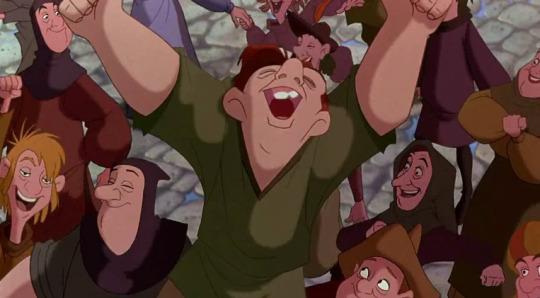
Setting: Paris, France
Kingdom: Kingdom of France
Period: Late Medieval Period
Starting Date: January 6, 1482
Ending Date: January 8 or 9, 1482
Language: Middle French
#dating disney#The Hunchback of Notre Dame#hunchback of notre dame#notre-dame de paris#notredame de paris#notre dame de paris#quasimodo#esmeralda#phoebus#claude frollo#frollo#djali#romani#paris#france#paris france#1482
752 notes
·
View notes
Note
Thoughts on sci-fi fanstay that is super over the top/pulpy/cheese ball (i.e. Aquaman currently, The Last Starfighter in probably our early childhood, and other ones of such ilk)? And here's a fun one: best female leads in sci-fi?
Oh. Well, just one thing to start. To me there’s a vast, heavily distinguishable difference between today’s Aquaman and The Last Starfighter of 1980s cult fame, and not only because of their tremendous differences in budget and funding (something like $35 million in today’s value for The Last Starfighter versus a modest $200 million for Aquaman).
Both are coming from distinct sub-genres of sci-fi, Aquaman from the mythology of DC comic books a type of film so popularized by Disney’s Marvel brand with credit due to progenitors like Sam Raimi and Bryan Singer, and The Last Starfighter from the space opera adventure archetype revitalized in its time almost singlehandedly by George Lucas with Star Wars, though a great deal of credit goes to Kubrick in proving over decade earlier that high concept science fiction films were marketable product which could be executed with no want for class.
Prime of all, each film is coming respectively from a very different creative direction and visionary perspective, Aquaman has a decades-old established fanbase in comic book readers. And though they’d never admit it even under intense acupuncture torture, all those Marvel fanatics are buying tickets to watch it too, if only so they can shriek all over the internet that it blows every dick in a five block radius. It can be argued that The Last Starfighter, though obviously not highly lucrative in its earnings, was far more creative a film in that it’s written by the same guy who did Escape From New York and Hook, for instance, the director was a nobody (unlike James Wan), and while capitalizing on the clamouring space opera fever of its time, it was an original property not unlike Star Wars in that its inspirations were strong but it was trying to break into the genre by creating its own unique story in that ex nihilo sort of way. Given these, to my mind incredibly important distinctions, I’d thus be led to conclude that, if both Aquaman and The Last Starfighter are in fact over-the-top cheesy, this is incidental not intrinsically corollary, and equating the two would be something like equating the super talented fat kid in art class with the high school’s star running back who’s getting more ass than a toilet seat.
In the case of Last Starfighter I’m not sure if it could be described as totally cheesballs by the standards of the time, though clearly less dour in tone than The Empire Strikes Back say, and perhaps not aging well because of this, it seems to fit comfortably into the niche it’s carved out for itself. In the case of Aquaman, do think being over-the-top cheesy is perfectly acceptable in a comic book story, because that’s the sort of world those stories inhabit regardless of however much grit or glamour in which they try to dress it up. This isn’t to imply there can’t be paramounts of the genre which push things forward and raise the bar, even redefine how such stories are told, but at the end of the day it still takes place in a world where people dress up like bats and wear spandex outfits in outer space while fighting robots and alien shapeshifters. That’s just ridiculous, and the best sort of those stories are likely the ones which are so engaging for the audience they forget how ridiculous it all is for becoming so connected to the characters and narrative. This sort of potential for surprise is why I’ll always love comic books, and it puzzles me why so many older people act as if such fondness is idiotic when comic books existed long before even they were ever born.
Still, cheesy is a slippery slope, some films verge that direction but I ain’t sure how many fall over the edge. Myself, I always think of it as something like Planet Terror or Demolition Man (both of which I adore), or whatnot. That said, I got absolutely no problem with cheesy movies, speaking of Escape From New York, and dare I say L.A. as well! I tend to drift all over the map in terms of entertainment, with a particular affinity for science fiction, medieval war stories, sword and sorcery, and cyberpunk. But if a piece of fiction entertains me, I’m all for it, regardless of whatever it’s supposed to be. Why, I just finished reading a pretty stark and serious sci-fi book called Sleeping Giants by Sylvain Neuvel and goddamn not at all action-packed a story, but I couldn’t put the damn thing down.
Oh, man. That thing about best sci-fi female leads though is a whole other bowl of spaghetti, yo. Out of the gate I’m always wont to mention Samus Aran, since she was one of my favorite heroes to play as a child (and has had a far more profound impact on me than most video game characters from that era). Dr. Banks from Denis Villeneuve’s Arrival was the first one who popped into my head when I read your question, but “best” is such a tough quark to glimpse if you catch my drift. Plus, you know more, cliché examples like Ripley and Jill Valentine of course, and no proper nerd would bring up sci-fi protagonists without mentioning Commander Shepard of Mass Effect’s culturally significant influence (my original Shepard was a woman). But that’s such a huge subject I think I’ll need to think about that one for a little while. Ask me again some time, I’d be down to explore that subject more thoroughly. For the sake of any readers’ poor eyeballs and brains, I’ll shut the hell up for now.

侍 headless
#non-anonymeisters#godzillaapproved#planet terror#rose mcgowan gif#and minigun leg#gratuitous violence#cheesy movies#discussion#cut-rate journalism#thoughts#bleh#cinema#filmmaking#writing#nerd shit#women in sci-fi
36 notes
·
View notes
Text
Here be Dragons - Board Games - Dicebox
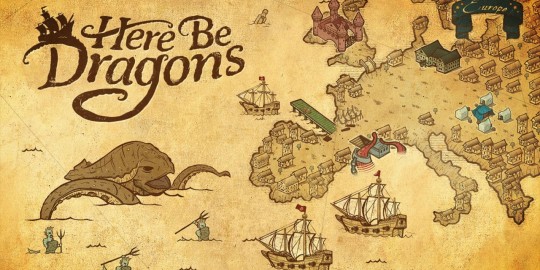
Ten years have passed since we first heard the gravel-toned voice of fantasy film favourite Sean Bean uttering the immortal phrase ‘winter is coming’. While Lord Eddard Stark might have lasted about as long as a packet of chocolate biscuits in the Dice Box office, the impact that HBO series Game of Thrones had on popular culture is still as strong today as a decade ago.
So, in this triumphant return to our games and culture blog, we bend the knee and offer up a salute to the legacy of Westeros and the incredible way in which the adaption of George RR Martin’s ‘A Song of Ice and Fire’ reignited the flames of fantasy.
‘When You Play the Game of Thrones, You Win or You Die.’
Regardless of whether you loved or hated the way the show ended, GOT provided some of the most memorable, most intense, and most hotly debated topics in popular culture of the last decade. The success of the show directly contributed to an enormous resurgence in sales of fantasy classics. It also prompted increases in network budgets for serialized fantasy shows, paving the way for new television adaptations of works by authors like Neil Gaiman and Andrzej Sapkowski.
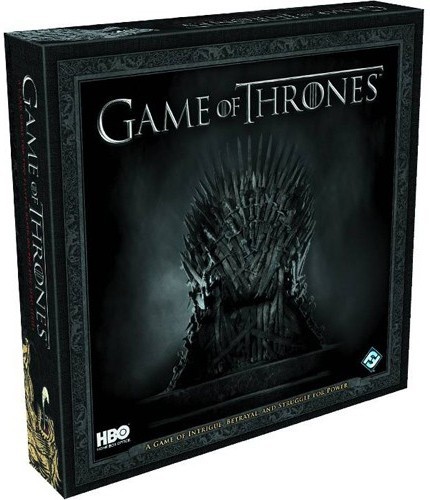
Possibly the most impressive thing about Game of Thrones was how it bridged the gap between traditional fantasy fans and newcomers to the genre. While swords, sorcery, and dragons had always been staples of the genre, very few shows before it have culminated in bringing together such a widely spread army of fans, both inside and outside the fantasy community.
For many, Thrones was a gateway show. In a sense, it made fantasy mainstream and provided those who had previously thought of the genre in terms of Tolkienesque tones with something accessible.
Seeing bars and sports centers offering screenings to audiences of hundreds, all gathered to see the final undoing of the Night King made the ‘Long Night’ episode akin to the Super Bowl of fantasy.
What Do We Say to The God of Death?
Ensemble casts in fantasy are nothing new. Take Peter Jackson’s Lord of the Rings movie trilogy. That had a cast longer than Arya’s list after the Red Wedding. The difference between GOT and other works of similar style was that, of course, in this show, the good guys didn’t all live to see the end.
All bets were off and nobody was safe. In the words of Ramsay Bolton – if you think this has a happy ending, you haven’t been paying attention. So we did pay attention.
And we were rewarded with characters like Syrio Forel, whose line ‘What do we say to the God of Death?’ has been uttered a million times despite his character only having just over six minutes of screen time in a show running for eight years.
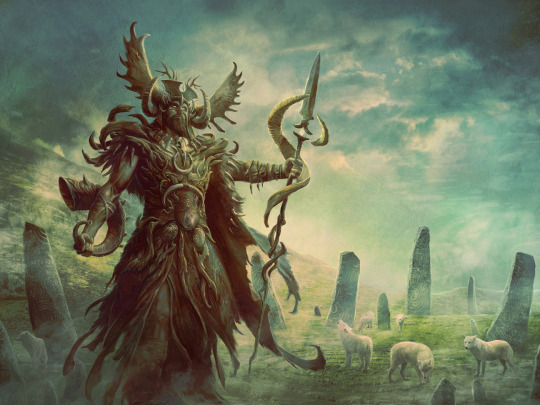
Characterization played a massive part in the popularity of the series. It gave us characters we loved, characters we hated, and characters that prompted us to ask do I really like this person? Is it OK to root for them?
Take Kings layer Jaime Lannister, for example. Despite an incestuous relationship with his sister, his attempted murder of a small child, the actual murder of his cousin, and other heinous crimes, Jaime performed some of the most heroic acts in the show. For example, the saving of Brienne of Tarth from a bear pit, abandoning his position to ride north to fight at Winterfell, not to mention him saving an entire city of people from being burnt to death by Wildfire.
It could be argued that Jaime Lannister was just as much or as little a hero as Jon Snow, the more traditionally styled good guy who, in many ways, was responsible for just as many deaths. Even if his failings were less calculated and more, well, miscalculations.
You see, like many great shows, the success of Game of Thrones lies not just in its popularity but in its ability to be surprising, divisive, and shocking in equal measure. It doesn’t matter whether your opinion of it was good, bad, or you weren’t quite sure either way. The important thing is that almost everybody had an opinion on it.
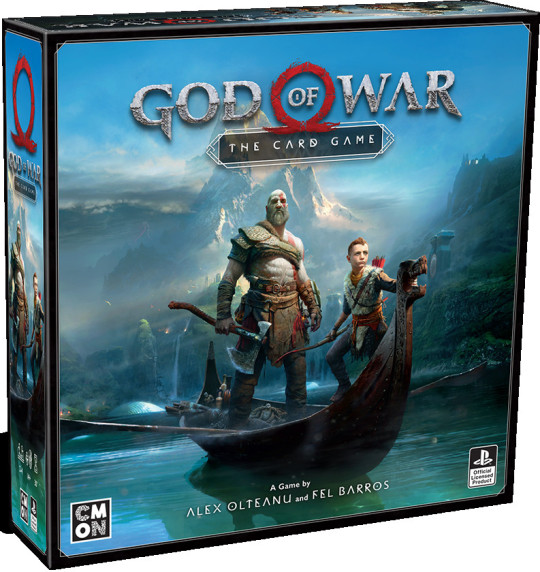
The show may be over, but the impact still carries. Rumours of a follow-up series have permeated popular culture since before the last episode ended, and with it looking more likely than ever that we will see some sort of prequel in the next year or two, now is a great time to head back to Westeros for another watch. As always, here at Dicebox, we like to intersperse our box set binging with some suitably thematic board games.
If you are tempted to turn your hand to a Thrones-inspired game night, we have compiled a list of some of our favourite games for you below, plus our take on which GOT characters might like them.

‘Best Game for Those Who Covet the Iron Throne.’
Game of Thrones Oathbreaker ($51.00) is a social deduction game, where the lords and ladies of the houses of Westeros plot, scheme and conspire against the King or Queen. Card-based, Oathbreaker is ideal for people who like their games centred on deception and revelation. Designed for larger groups, making it a good choice for big parties or game events, Oathbreaker is one for GOT super fans.
The character most likely to play this game? Petyr Baelish, of course. After all, chaos is a ladder.
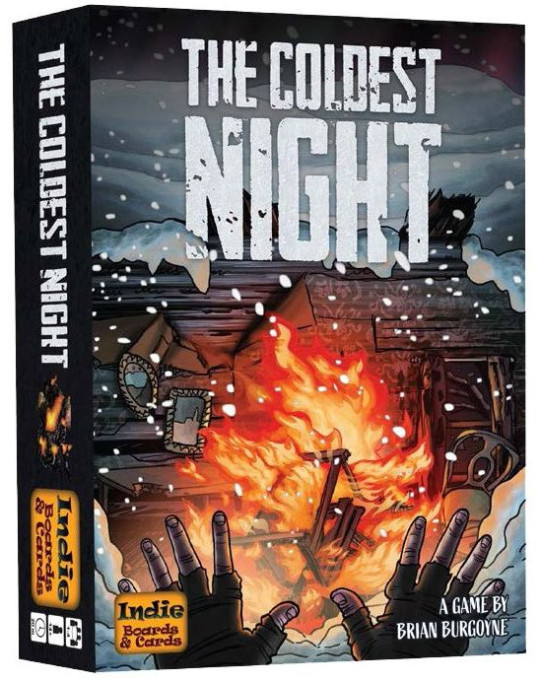
‘Best Game for People Who Live Beyond The Wall.’
You’ll be relieved to hear that you don’t need to defeat the white walkers to play The Coldest Night ’ ($34.00). This cooperative strategy game depends on players keeping the fires burning long enough to survive a winter night harsh enough to make anyone shiver. A great team game with a short playing time makes it a good choice for between episodes. Played by between one and four people, it’s also a good option for smaller groups. The character most likely to play this game? Snow storm veteran, Tormund Giantsbane.
Best Game for Anyone Who Wishes They Had their Own Sword.’
As far as epic fantasy board games go, we really can’t recommend Sword & Sorcery: Immortal Souls ($127.00) highly enough. This beautifully presented cooperative game pits players against an ancient evil and tasks them with achieving legendary status through battle. Customizable characters, highly visual game pieces, and several tactical playing options make an experience well worth the slightly higher price tag. Sword & Sorcery is an investment in your gaming repertoire that can be played time and again.

The character most likely to play this game? We can’t envision anyone playing this game better than the mother of dragons herself, Daenerys Targaryen.
‘Best Game for People Who Drink and Know Things.’
A good choice for parties, ‘Loaded Questions Party’ ($24.00) challenges players to guess which of the group gave what answers to questions and to come up with their own creative responses to the many preset and hilarious questions the game provides. A firm favourite at any of the Dice Box office gatherings, this is a great one to bring out after a few introductory drinks to break the ice and will help get your game night off to a memorable start.
The character most likely to play this game? Tyrion Lannister, naturally. He drinks and he knows things.

However you theme your sessions or parties, here at Dice Box, we’re glad to be back in the blogging saddle once again (dragon saddle, naturally). We’ll be posting regularly with the best recommendations and discussions about board games, pop culture, and any other fun stuff we can think of.
Don’t forget to keep checking back for more blog updates, take a look at the new products on our website, and send us your updates on what you’ve been playing recently via our social media.
Until next time – happy gaming.
#boardgames#board game#Card Game#game of thrones#GOT#god of war#daenerys targaryen#john snow#sansa stark#immortal souls#game
0 notes
Text
Before Conan the Barbarian, There Was Bran
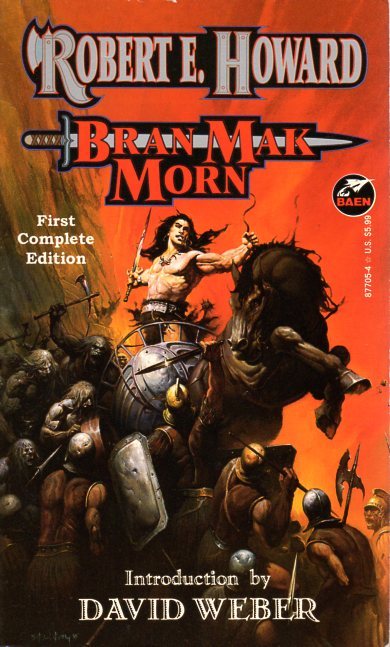
By Adrián Maldonado
I write about medieval barbarians in my legit academic work, and use this blog to explore how they occasionally escape from our powerpoint slides into the public consciousness.
I recently realized that for all my degrees, I didn’t know a thing about one of history’s most famous barbarians. It was high time I looked up Conan.
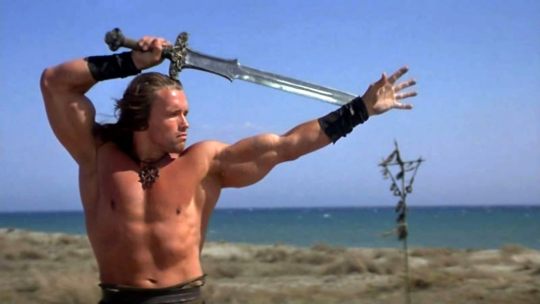
Stock image of Dark Age Europe
In my 80s childhood, Conan the Barbarian was a kind of folk character – a stock image of a beefy white guy in a furry loincloth with a giant sword. (I would probably be picturing Conan the Librarian, to be honest.) But I already had He-Man in my life, a knock-off Conan cartoon made to sell toys, though I could not have known that because the cartoon was so unspeakably awesome it would brook no questioning. Indeed, I only discovered the Schwarzenegger Conan films later on, when I was old enough to realize he had made other weird, non-science fiction films back in the Reagan era. I knew vaguely that the character was based on a book, or was it a comic book? This was before the internet, and before I could ever give a shit about a character with no good action figures.
Flash forward twenty years or so, when I am a grizzled Xennial hunched over his computer, writing about depictions of the Picts in pop culture. Immersed in terrible filmic depictions of ancient Scottish warriors (always warriors), it struck me that I had never thought about Conan the Barbarian. What kind of barbarian was he meant to be? Did his story take place in some kind of historical epoch? Were there Picts in it that I could add to my list?
Imagine my shock when I did find a Pict down this rabbit hole (or souterrain?), and he looked like this:
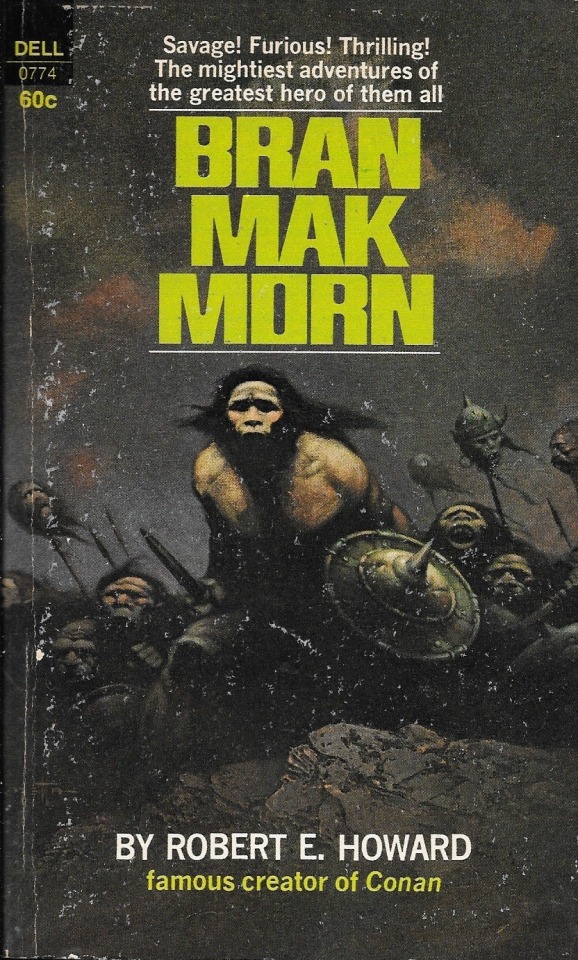
Whatever else I was working on, stopped.
***
Robert E. Howard is best known today as the creator of Conan the Barbarian. But little did I know that he was one of the first pop culture appropriators of the Picts. Indeed, he was writing about the Picts long before he even conceived of Conan. The Picts were his muse. I feel like this is important, and I may need more than one blog post to say why. But first, an introduction.
I had seen some hilarious renderings of Picts over the years, but they always fell into the usual stereotype of tattooed maniacs hurling themselves onto Roman spears.

Tattooed maniacs hurling themselves onto Roman spears (source)
This 1960s paperback collection of stories by Howard entitled Bran Mak Morn, apparently the last king of the Picts, depicted this king Pict as a Neanderthal surrounded by howling ape-men. To me, this seemed like the purest distillation of the idea of the barbarians beyond the wall as sub-human, a trope developed in Roman imperial propaganda and continually reproduced today by the Hadrian’s Wall heritage ecosystem.
The paperback was one of a series of reprints of Howard’s genre-defining pulp fantasy of the 1920s and 1930s, brought back to life in the wake of the Tolkien wave of the 60s. Closer inspection revealed that Frank Frazetta’s 1969 cover image bore little resemblance to the description of Bran himself in Howard’s tales, even if his Pictish ‘race’ was certainly of a simian variety. More on this presently. What I wanted to know first was how a Texas kid learned about the Picts in the early 20th century, and came out with this.
***
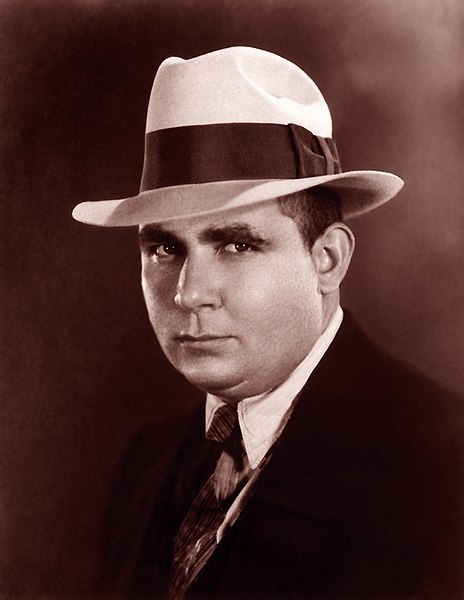
Robert E Howard had a tough childhood in his native Texas. Coming from a broken home, he moved around a lot and read books to keep himself company. In 1919, at the age of 13, his father dragged him to New Orleans while he took classes, so he squirrelled himself away in a library on Canal Street. It was there that he first read about the Picts in a book about British history. The image of a little, dark race from the north that hassled the Romans but could never be conquered fascinated him. Perhaps due to the ray of light this book gave him at a sensitive point in his childhood, the Picts remained ingrained in his mind for the rest of his short life, which he would later take in 1936, at the age of 30.
Like many other nerdy kids, he wrote stories to pass the time. In his archive were found several early writings which reveal the impact the Picts had on him. There is a school paper from 1920-23 about the Picts. The first story he ever submitted for publication was about the Picts, ‘The Lost Race’, but it was rejected by the editor of Weird Tales in 1924. He sold his first story later that year, beginning his professional writing career. A revised version of ‘The Lost Race’ was finally published in Weird Tales in 1927, introducing the world to Bran Mak Morn, a Pictish king who fought the Romans. He would go on to make several more appearances in Howard’s swords-and-sorcery tales, and the Picts eventually became one of the myriad ‘races’ in Howard’s Hyborian Age, a proto-prehistoric shared universe inhabited by Conan the Barbarian.

Bran Mak Morn by Gary Gianni (source)
Howard’s Picts are a peculiar bunch. From his first essay on them, he describes them as the remnants of the stone age inhabitants of Britain, comparing their appearance to Native Americans. In this view, they were the ‘Mediterraneans’ (as opposed to Celts or Nordics) who first brought the knowledge of farming to Britain in the Neolithic. They were eventually swept aside by the fair-skinned ‘Celtic’ race of metalworkers, at which point they were forced to mingle and interbreed with the indigenous cavemen, a barely human simian-like race. This meant that by the arrival of the Romans, the Picts had become stunted, swarthy, long-armed ape-men. All except Bran Mak Morn, their king, who had kept his bloodline pure. All pretty disgusting racial logic now, but hey, so the argument goes, it was the 20s.
Except that here it was, unfiltered and raw, in a book released during the height of the civil rights struggle in the United States. I bought this ancient artefact off of Amazon for pennies, and holding it in 2017, it felt like I’d acquired an illicit antiquity. Plenty of writers have tripped over themselves to call out and defend Tolkien and Howard regarding the racial (if not always racist) component to their mythical prehistories, so I won’t go down that route just now. But that cover image haunted me.
***
In 2005, Bran Mak Morn received a brand-new edition, the Weird Tales stories now bundled with unpublished manuscripts, fragments of Howard’s correspondence, and critical essays by Rusty Burke and Patrice Louinet. Armed with an annotated timeline of Howard’s Pictish writings, which spanned his career, and supplemented with google-fu, I was able to clarify the genesis of Bran Mak Morn.

Former Canal Street public library, New Orleans, 1911 (source)
It is possible to trace the public library Howard visited when he was 13, when he first encountered a British history book and his vision of the dark, prehistoric Picts. The Canal Street public library in question must be the one that formerly stood at 2940 Canal Street at the corner of South Gayoso, opened in 1911. A photograph survives on the New Orleans library website, and Google Maps reveals it is now a Yoga studio.

Origin myths of the Picts (source)
Rusty Burke has also plausibly identified the very book that Howard seems to have read: The Romance of Early British Life (1909) by George Francis Scott Elliot. This is apparently one of the flashy, pulpy ‘Library of Romance’ published by London-based Seeley and Co, described as ‘profusely illustrated’ ‘gift books’, which included among their number volumes such as The Romance of Modern Mining and The Romance of the World’s Fisheries. The author Scott Elliot was a botanist and antiquarian, president of Dumfries and Galloway Natural History and Antiquarian Society during an apparent low point in its history.
The fairly ridiculous book in question seems to have been written for Edwardian teenage boys, and does indeed bear the DNA of Howard’s later writing on the Picts: “In very ancient times Britain had been twice conquered, first by the small, dark Picts of the Mediterranean, and later (about 2000 or 1000 B.C.) by the tall, brown-haired, Gaelic-speaking Celts (237).” The chapter on the introduction of farming to Britain is called ‘The coming of the Picts’, in which Scott Elliot explains that they have been called by several names before – Homo Mediterraneus, Basques, Iberians, Silurians, the Firbolg, the Dolmen-builders – but he calls them Picts to save on ink (80-1). He claims they are still readily identifiable in the present day, as the short, brunette people who are mostly found in towns and cities, unlike the fairer Teutons or Kelts who prefer the countryside (92-3).
Howard’s vision of the Picts was thus formulated by the equivalent of our contemporary public archaeology, an accessible potted prehistory of Britain by one of Scotland’s leading antiquaries. Why this particular image, of a dark, forgotten people without a history, resonated so deeply with him, is a subject to ponder. But he was clearly not alone in his fascination. While racial views of the past soon died out in archaeological writing, they would go on to have a tenacious grip on the fantasy world. And which of these two genres do you think has a greater influence on people’s image of the medieval past?
***
Why does any of this matter? It is a demonstration of the role of ‘the Picts’, in various guises, as the untermenschen of what you might call western folk history. The fact that a young boy in inter-war Louisiana could head to the nearest library, read about them in a cheap history book, and then build a world-beating fictional universe that is still beloved today based on this is remarkable. As I’ve spent some time documenting on these pages, that image of the Picts is still in a way with us. A recent article in the Glasgow Herald has the reporter coming to the shocking insight that the Picts were not ‘hairy savages’ after speaking briefly to a couple of scholars. I wonder if that means we are doing our job well, or terribly.
It also opens up questions about the central role of race at the origins of both archaeology and the fantasy genre, a sticky subject that will have to be the subject of future blog posts [Editor's note: now read the follow-up to this post]. In the meantime, go check out similar topics being covered over on The Public Medievalist.
And hey, why not donate to your local public library while you’re at it?
***
Follow us on @AlmostArch
Header image via Jeff Black
5 notes
·
View notes
Text
Sensor Sweep: Celtic Fantasy, Donald Wollheim, Creepy Magazine, Hideous Creatures
Popular Culture (Men of Violence): Historical fiction special! Vikings! Roman soldiers! Pirates! Swash-buckling soldiers of fortune!68 pages, all colour, packed with reproductions of rare and unusual paperbacks.Articles, reviews, interviews and features on Casca, Gardner Fox, Henry Treece, Talbot Mundy, Rosemary Sutcliff, Rafael Sabatini and forgotten cover artists.
Fiction (DMR Books): Awhile back, Dave Ritzlin here at the DMR blog asked me to recommend some good Celtic fantasy fiction. Today being Celtic New Year’s Day, it seemed appropriate to start off the New Year with a list of quality Celtic fiction.
To be honest, I can’t say that I like the vast majority of the fantasy which has been marketed or labeled as “Celtic.” As the late, great Steve Tompkins noted long, long ago, “cheapjack Celticism” has reigned o’er the land of Celtic fantasy since at least the 1980s. Languid, matriarchal tree-huggery tends to be the order of the day in most “Celtic” fiction, with the authors in question either being pig-ignorant of Celtic history and culture or cherry-picking to suit their (boring) take on the subject.
Fiction (DMR Books): Don Wollheim died on November 2, 1990, leaving behind him a sword and sorcery legacy that has never been matched. In the rarefied Valhalla of S&S editors/publishers, Wollheim sits enthroned at the high table. He debuted or “broke out”–as in, “their first big splash in the paperback market”–more enduring and important characters in the S&S
pantheon than any other editor/publisher. It is as simple as that.
Anime (Walker’s Retreat): Any Space Opera taking queues from Japan will not fail to acknowledge the Macross franchise. Starting in 1982 with Super Dimension Fortress Macross (which many of you known as the most popular part of Robotech), this is the #2 Real Robot franchise in Japan and has been since its debut (following the king that is Gundam). The consistent presence music as a power unto itself, the love triangles that drive the relationships, and their combination in the form of music that has now had inter-generational influence in anison and J-pop (and brought about the rise of Living Goddess Yoko Kanno).
Lovecraft and Gaming (Yog-Sothoth.com): My latest scrape of the internet reveals that Hideous Creatures: A Bestiary of the Cthulhu Mythos for Trail of Cthulhuhas been released. Kind of. Hideous Creatures… is officially on pre-order at Pelgrane’s web site, but an article comment reveals that you’ll receive the PDF as soon as you place the pre-order for the print edition. – That means it’s out. – The content is there for you to purchase and peruse now; the fact it’s digital bits rather than the 352 page hardback doesn’t alter the content (just the way it may be consumed). If you’re after a new bestiary of Cthulhoid creatures then have a look at Hideous Creatures… Pelgrane promises you something a little different.
Books (Atomic Junk Shop): Your Favorite Book Cover:
Oh my God that is an awful question for someone like me. I can’t decide. It really depends on the genre and the artist and what kind of mood I’m in that day. The best I can do is narrow it down to a few favorite artists. I think the artist that perfectly captured the spirit of the story more than anyone else is Gino d’Achille with his covers for the Edgar Rice Burroughs Mars books.
Fiction (Frontier Partisans): I was in the mood for some fun, for a read that strums the right chords but isn’t related to a project or anything that feels like work. That can be a problem for me. I tend to put way too much weight on my choices of fiction. Pondering this in preparation for Running Iron Report podcasts, I realized that I kind of expect a novel to rock my world, always seeking that visceral hit that I got when I was young and a novel would go to my head like strong wine. Chasing the high and most often finding myself dissatisfied.
It’s why I read very little fiction these days. I really don’t read just for funanymore. And that’s just stupid. I needed to get out of my own way and simply enjoy a yarn.
Over the weekend, I kept running across an author named Jonathan French and a book titled The Grey Bastards.
Comic Books (Paint Monk): Robert E. Howard is best known, and deservedly so, for Conan of Cimmeria, but he was a prolific author who wrote in several genres. While he arguably created the sword and sorcery tale, he also hammered out a staggering amount of pulp fiction, including westerns, boxing stories, detective yarns, and horror tales.
One of his best horror works was “Out of the Deep”, posthumously published in Magazine of Horror #18in their November 1967 issue.
Fiction (Tellers of Weird Tales): Before Spider-Man and Superman, before Marvel and DC, even before comic books, there was the word superhero. (1) My hypothesis is that the word and the concept originated in the 1890s, give or take a decade, just as so much of our popular culture originated at that time. In order to test my hypothesis, I have used an online search engine/database/index of newspapers dating to the nineteenth century. I can’t say that the newspaper articles I have found were actually the earliest occurrences in print of the following words. Even if they’re not, my guess is that they’re close, as ideas, concepts, and memes seem to arise at a certain time, often in a certain place, and in a certain society or culture.
Cinema (Sacnoth’s Scriptorium): John Boorman’s Lord of the Rings
In 1970, The Lord of the Rings was everywhere, its eco-friendly escapism dovetailing neatly with the communal mindset of the post-Woodstock era. A film was inevitable, and rights-holder United Artists turned to John Boorman, a British director with a passion for Arthurian fantasy and – more importantly – a moderate hit under his belt in Point Blank. Joining forces with the young screenwriter Rospo Pallenberg, Boorman turned out a script that covers all three books, runs to 178 pages and is, without question, one of the weirdest documents in existence.
Comic Books (Pulp Archivist): In 1947’s Writer’s Digest, Stan Lee, then editor of Timely Comics, writes in his “There’s Money in Comics”:
One point which I can’t stress too strongly is: DON’T WRITE DOWN TO YOUR READERS! It is common knowledge that a large portion of comic magazine readers are adults, and the rest of the readers who may be kids are generally pretty sharp characters.
Comic Books (Paint Monk): Few comics had the impact on me that Creepy did. The first issue I got my hands on was issue 4 of the magazine, dated August of 1965. I hadn’t even been born yet when this issue dropped, but I happened upon it at a flea market we used to visit when I was a kid and remember vividly seeing that Frank Frazetta cover for the first time.
Gaming (Niche Gamer): Publisher Skybound Games has announced they’ve cancelled the planned physical release of Hollow Knight.
The August-announced retail version of the game is now longer happening. Here’s a statement from Skybound:
“We are saddened to share that we’ll no longer be working with Team Cherry to bring Hollow Knight to new platforms. We absolutely love the game and wish Team Cherry continued success. We look forward to seeing what’s next for them.”
Here’s a rundown on the game:
Popular Culture (Kairos): Author JD Cowan offers a grim prognosis on the fate of pop culture based on Hollywood’s manifest inability to connect with its audience.
The Predator is a shallow, spiritually dead movie of stolen imagination and rehashed ideas with a message that could only have been thought up by someone too pathetic to grow up beyond adolescence. And it was written by someone who was there when the original film was being made. And not a talentless man, either. He wrote the original two (and best) Lethal Weapon films as well as Kiss Kiss Bang Bang. He knows action and how to give the audience what they want.
Sensor Sweep: Celtic Fantasy, Donald Wollheim, Creepy Magazine, Hideous Creatures published first on https://medium.com/@ReloadedPCGames
0 notes
Text
Gender and Sexuality Portfolio Post One: Introduction to Special Interest Topic

Women in Film, Rom-Coms, and the Role of Gender
Throughout the history of film women have been left out of major roles and have often been seen merely as sexual objects. The Bechdel Test calls attention to this deficit of female representation in entertainment by questioning the number of women included, whether the women interact, and if they talk about something other than a man. This test is a great way to examine TV shows and movies to see if they pass or fail the test of gender and sexism (Launius and Hassel 2015, p.19). Romantic Comedies (Rom-Coms) are said to be built for women because the main character and majority of the cast are comprised of women. However, the plotline of these movies would fail the Bechdel Test because they almost always revolve around a woman’s happiness that is dependent upon a man.
Originally, I chose the topic of Romantic Comedies and gender roles, but after research I have expanded my topic to include women in film to get a broader sense of the industry and investigate how deeply rooted gender is in this system. I wanted to explore Rom-Coms because as an intellectual who is female, I enjoy this genre even though I know the main character’s priorities are out of line. The average Rom-Com is centered around an intellectually savvy woman who is successful in all areas of her life that she can control (i.e. her job), yet she never feels fulfilled until she meets the “perfect man”. I think that if viewers can realize this is a problematic line of thinking, then it is harmless to enjoy this genre of film. However, it can be a dangerous narrative to teach young girls growing up who believe this to be the goal they themselves need to achieve. I also wanted to broaden my topic to women in film because while women are the minority outside of Rom-Coms, it is important to include other genres of film that are influential to how we identify of ourselves in relation to gender and sexuality as well.
While researching I began with Romantic Comedies and expanded the search to Romantic Comedies and gender to only get two results including movies about Bromances and female characters with a gay best friend. Since this search was limited I opened it up to women in film to get 88 results; then included gender to narrow down the results to 26. Most of these results revolved around topics of empowered women in action roles, sexuality and violence, and even included topics about men. It was interesting how articles about men, such as “Portrayals of Masculinity in ‘Guy Movies’”, popped up in my search for women in film. It seems that even when searching for the women, men are always part of the conversation.
Speaking of men, the article “Bros before Ho(mo)s: Hollywood Bromance and the Limits of Heterodoxy” considers the possibility of progressing the portrayal of masculinity by looking at three movies: The Hangover, Wedding Crashers, and I Love You, Man. Bromance was created in relation to Rom-Coms and usually keep the wedding theme, but instead of a romantic plot these movies display a friendship between two males. This article concluded that these movies are strictly heteronormative and overexaggerate masculinity to attract their viewers, which is quite the contrast to Rom-Coms. Other than depicting a close friendship between males the ingredients to a Bromance, such as overt masculinity, are not new to film. Hegemonic masculinity is most often seen in action movies where a female is juxtaposed as a weak damsel in distress. Modern superhero and action films are trying to combat this idea by introducing more women into these worlds. The only issue with adding heroines into these world is that they are often created by men for men. In the article, “The Empowering (Super) Heroine? The Effects of Sexualized Female Characters in Superhero Films on Women,” Hillary Pennell and Elizabeth Behm-Morawitz uncover the possible impacts (positive and negative) of women depicted in superhero films. In this study female undergraduate students were asked to watch X-Men, Spiderman, or no video completion (as the control) before taking a survey on body-esteem and self-objectification. X-Men was chosen for the sexualized-heroine architype, while Spiderman was chosen for the sexualized-victim architype. The results of the survey showed that the viewers who watched the video with the sexualized-victim were more likely to answer with traditional gender roles because those beliefs were reinforced in the video. Strangely, watching the sexualized-heroine type did not lead to more open ideas of gender role beliefs, but the sexualized heroines did lead to lower body-esteem of the viewer (Pennell, H., & Behm-Morawitz, E., 2015). This study shows how vital it is for viewers to see proper representation of women that is not oversexualized or helpless because media has some effect on their beliefs. Knowing that adults spend and average of 12 hours a day using media confirms how deeply rooted it is and is unavoidable (Ward, L., Seabrook, R., Manago, A., & Reed, L., 2016). “A sheep in wolf's clothing? The problematic representation of women and the female body in 1980s sword and sorcery cinema” and “She Hits Like a Man, but She Kisses Like a Girl: TV Heroines, Femininity, Violence, and Intimacy” are two articles that also bring up strong female leads and heroines that attempt to break through the glass ceiling of the mythic norm. The issue in these movies/shows that the articles mention is either the heroine is sexualized, thus taking away her authority, or is stuck in a heteronormative relationship bringing back the traditional norms of a woman needing a man to validate her in her own story. Fine, K. (2012) also mentions violence and how that plays out in the gender roles of heroines as well. It is reinforced throughout Western culture that power is inherently masculine, something that is in nature and that can’t be changed. However, this is an example of the mythical norm because the women described in the article, Gemma from Sons of Anarchy and Mary from In Plain Sight, redefine this power by being aggressive and violent female characters. They exhibit instrumental aggression, which is associated as masculine because it is cold and calculating not emotional. By violating their gender roles, they call masculinity into question and redefine toughness. Although, their characters are not fully transcending their gender roles they are closer to breaking the dichotomy of the male as active and the female as passive. Bleakley, A., Jamieson, P. E., & Romer, D. (2012) also bring up violence and sexual content, but in the context of number of women versus men depicted in movies. The results show that female characters were twice as likely to be involved in more sexual content over time than men, but violent content was increasing both for men and women. This conclusion is not shocking considering the amount of movies that can combine sex and violence that include women and the increasing amount of media that portrays women in a mans world that is inherently violent.
Overall, women are starting to make an appearance in film, but how they are shown is important. More strides toward breaking gender role beliefs need to be broken to allow for a space for women in the media. Rom-Coms and reality TV can still exist for pleasure, but are problematic lessons for the adolescents learning what society deems important. I hope to learn more about how female roles (i.e. heroines) can expand in the future to break these societal norms and find research on how Romantic Comedies can change to fit this new dynamic that feminists are striving toward.
References
Bleakley, A., Jamieson, P. E., & Romer, D. (2012). Trends of Sexual and Violent Content by Gender in Top-Grossing U.S. Films, 1950–2006. Journal Of Adolescent Health, 51(1), 73-79.
Brook, H. (2015). Bros before Ho(mo)s: Hollywood Bromance and the Limits of Heterodoxy. Men & Masculinities, 18(2), 249-266.
Fine, K. (2012). She Hits Like a Man, but She Kisses Like a Girl: TV Heroines, Femininity, Violence, and Intimacy. Western American Literature, 47(2), 152-173.
Launius, C., & Hassel, H. (2015). Threshold Concept in Women’s and Gender Studies. New York, NY: Routledge.
Pennell, H., & Behm-Morawitz, E. (2015). The Empowering (Super) Heroine? The Effects of Sexualized Female Characters in Superhero Films on Women. Sex Roles, 72(5-6), 211-220.
Ward, L., Seabrook, R., Manago, A., & Reed, L. (2016). Contributions of Diverse Media to Self- Sexualization among Undergraduate Women and Men. Sex Roles, 74(1-2), 12-23.
Wright, A. (2012). A sheep in wolf's clothing? The problematic representation of women and the female body in 1980s sword and sorcery cinema. Journal Of Gender Studies, 21(4), 401-411.
0 notes
Text
Outline
Cultural impacts of Japanese comics
This paper presents information and semeiotics that provides with the analysis of the media cultural life explaining the relation that is there between certain phenomenon like performance, creativity, value and fantasy in and how they contribute to the Japanese comics to enhance success in the multimedia society. To meet these targets it is important to firstly understand the notion of Japanese comics, their history to their current situation. Consequently, the paper looks at some key concepts that are essential for the activity and how they affect the social wellbeing of the society and how they impact in the society at the end of it all. The semiotic methodology is employed in shaping the social presentation of the Japanese comic as the major tools to enhance formal description and explanation of both social and cultural representation.
Key words: creativity, fantasy, value, performance, Japanese comics, cultural impact.
Comics is a medium that is usually used in expressing ideas through images and often combined with some texts or other forms of visual data for clear understanding (Cohn, 2010). In most case, they use the form of a juxtaposed succession of panels of images. The textual devices like the balloon use of captions show the dialogue or any other related information concerning the images. The arrangement of the comics on the panel highly contributes to the understanding of the narrative pacing. In addition, the use of cartoons and other similar types of illustration are the common images that use photography. The common types of comics include the strips, gag cartoons, books, and editorials.
Japanese comics’ uses creativity
Japan is a very creative country considering that it is the origin of various creative things. The use of manga and other visual mediums are usually very unique and innovative all through the 20th century. By the beginning of the 1990s, the world discovered the depth of Japanese manga and other visual mediums and the role they play in the society (Weiner, 2010). There is also a long list of the innovations and invention that Japan has provided to the world through the use of the comics in diverse ways hence improving world's economy. Students in the universities and colleges owe appreciation to the Japan for the instant ramen. Markedly, each and every person in the world have greatly benefited from the Japanese creativity for the very many things that they have come up with including the machines and other industrial supplements.
Japanese comics’ uses fantasy
Manga fantasy entails the swords and sorcery the animation style the Japanese features in most of their video and other games that are on the market. The secrets of the techniques of the art create wonderful worlds. The increase in the fashionable styles on both digital and traditional animators, manga remains to enjoy the popularity. Notably, there is the manga fantasy world brings down all individuals who are interested in the creation of the scenes for themselves. Markedly, the artist learns the act of illustrating a detailed graphics to bring forth fearsome creatures or pass a satisfying message through comics.
Japanese comic uses value
Just like the comic collection, the manga books and graphics serve as values or priced back up to the collection of the comic. Many collectors of the comics are usually ready in paying bigger sums for a classic and the manga issue. The manga value takes in vital considerations that determine it worth depending on the age, creator popularity among other. The grading and appraising are very important since it would be helpful in case one needs to know the worth of their manga. Therefore, it is important to have the manga graded by the trusted individuals or better still learn how to pre-asses the Japanese comics to save both money and time. The US and other parts of the world usually use comics, graphics, and animation in either learning in the classrooms or shaping their education in diverse ways (Sone, 2008). Markedly, this is clear in Japan where since the Second World War, they have been using manga and the animated films to enhance their learning which the key value of using the comics is to enhance cultural diversification since every part of the world uses the mangas.
Performance in Japanese comics
Japan have got an impressive array of traditional performing arts however, it is difficult in maintaining their traditional communities following the increasing globalization (Nabuoka, 2010). Through keenly looking at the Japanese comics who is also known as manga, the reader might find the plan of changing gender sex in a case where it inadvertent cut into humorous if not being unbelievable. Usually, the storyline of the comics or manga, in that case, becomes an illustration of hard ideas when it comes to gender creation bringing forth the gender trouble. The upcoming ideas make it hard to understand with the help of manga being used as Ranma to show that the obscure theory can become easier to figure out.
Reference
Belk, R. W. (2007). Material values in the comics: A content analysis of comic books featuring themes of wealth. Journal of Consumer Research, 14(1), 26-42.
Cohn, N. (2010). Japanese visual language: The structure of manga. Manga: An anthology of global and cultural perspectives, 187-203.
Iwabuchi, K. (2002). “Soft” nationalism and narcissism: Japanese popular culture goes global. Asian Studies Review, 26(4), 447-469.
Iwabuchi, K. (2008). Recentering globalization: Popular culture and Japanese transnationalism. Duke University Press.
MacWilliams, M. W. (2014). Japanese visual culture: explorations in the world of manga and anime. Routledge.
Nobuoka, J. (2010). User innovation and creative consumption in Japanese culture industries: The case of Akihabara, Tokyo. Geografiska Annaler: Series B, Human Geography, 92(3), 205-218.
Ogi, F. (2003). Female subjectivity and shoujo (girls) manga (Japanese comics): shoujo in ladies' comics and young ladies' comics. The Journal of Popular Culture, 36(4), 780-803.
Shigematsu, S. (2009). Dimensions of desire: Sex, fantasy, and fetish in Japanese comics. Themes and issues in Asian cartooning: Cute, cheap, mad, and sexy, 127-163.
Sone, Y. (2008). Realism of the unreal: the Japanese robot and the performance of representation. Visual Communication, 7(3), 345-362.
Toku, M. (2009). What is manga?: The influence of pop culture in adolescent art. Art education, 54(2), 11-17.
Weiner, R. G. (Ed.). (2010). Graphic novels and comics in libraries and archives: Essays on readers, research, history and cataloging. McFarland.
Wright, B. W. (2007). Comic book nation: The transformation of youth culture in America. JHU Press.
Shamoon, D. (2004). Office sluts and rebel flowers: The pleasures of Japanese pornographic comics for women. Porn studies, 77-103.
1 note
·
View note
Text
Sensor Sweep: The Night Land, Fritz Leiber, Scott Oden, Viking Prince
Horror Fiction (Too Much Horror Fiction): Known for penning the novel The Night of the Hunter upon which the classic 1955 movie was based, Davis Grubb (1919-1980) was a West Virginia native well-versed in the pride, poverty, tribulations and superstitions that were endemic to that region. This collection of short stories ranging over 20 years, Twelve Tales of Suspense and the Supernatural (paperback edition from Fawcett Crest, June 1965) includes some Weird Tales works as well as tales first published in popular magazines like Ellery Queen, Nero Wolfe, Woman’s Home Companion, and Collier’s.
Science Fiction (Classics of Science Fiction): The Night Land by William Hope Hodgson is not the kind of book you can recommend people rush out and buy. It is legendary for being difficult to read, and many consider it boring and tedious. However, The Night Land is one of those cult classics that have inspired a selective group of writers and readers. I had no trouble listening to an unabridged audiobook edition of the book that was just over eighteen hours long. I think hearing it rather than reading let me appreciate the archaic style Hodgson developed for telling his story.
Science Fiction (Strange at Ecbatan): Fritz Leiber was born on Christmas Eve in 1910. He died in 1992. One of my favorites among his novels, The Sinful Ones, and its earlier version, “You’re All Alone.” The Sinful Ones had an odd publication history. It began as a novella called “You’re All Alone”, slated for John Campbell’s fantasy companion to Astounding, Unknown. When the World War II paper shortage killed Unknown, Fritz Leiber had to abandon it.
Publishing (Kairos): Some significant context: digging under the following data points turned up that it predominantly applies to oldpub. In that regard, they make for a pretty accurate snapshot of oldpub’s readership ca. 2014. What do we find?
Women prefer to read books written by women.
Men prefer to read books written by men.
Women read more fiction than men–about four times more according to some sources.
Women like reading new books more than men do.
Pulp Magazines (Wasteland and Sky): Welcome to our final installment of this short series on Ron Goulart’s Cheap Thrills history of pulp book. Even though it has only been three entries, we have been through much. But now it is time cover what I believe the majority of the readers of this blog have the most interest in.
In this last entry we will cover the concluding three chapters of the work, hopefully leaving us with one last impression of what the pulps were truly about. In the previous post I discussed the majority of the book to show just how many similarities there were between the old and the new, and how heroes and hope were the mainstays of the form.
Fiction (DMR Books): Sax Rohmer exploded onto the pop lit scene in 1913 with the publication of The Mystery of Dr. Fu-Manchu—published in the U.S. as The Insidious Dr. Fu Manchu. Sax’s tale of the machinations of the “Devil Doctor” was an instant sensation. Rohmer would write two more Fu-Manchu—or “Fu Manchu” as it came to be spelled—novels in the next four years. He wouldn’t write another such novel for nearly fifteen years, but the impact of those first three reverberated for decades.
Comic Books (Broadswords & Blasters): Most Sword & Sorcery fans consider “Crom the Barbarian” by Gardener F. Fox and John Giunta (Out of This World #1, June 1950) the first true S&S comic. One can make the case that even earlier was the Prince Valiant comic strip back in 1937. This strip by Hal Foster influenced everything that came after. Prince Valiant follows the adventures of a knight in Arthurian times, has an encounter with a dinosaur and a witch. Does that make it S&S? Not really since the bulk of the strip isn’t supernatural but a costume drama. Fox’s Crom is truly a Howardian pastiche like no other.
Old Science Fiction (Pulp net): Captain Future, published by Thrilling (aka Ned Pine‘s Better), was probably its third most-popular pulp hero and possibly the only explicitly sf pulp hero. Editor Mort Weisinger developed the idea for the character, but main author Edmond Hamilton took that idea and turned it into Captain Future. Most likely people today would remember him from the poster in the TV series The Big Bang Theory, which is a blowup of one of the pulp covers.
Sherlock Holmes (The Passing Tramp): In January 1959 madly prolific Wisconsin author August Deleth (1909-1971), the so-called sage of Sauk City, wrote in a column in the Madison Capital Times about a recent query he had had from a reader that had obviously hit home. Late in the previous year he had published The Return of Solar Pons, his latest volume of adventures about Solars Pons, a detective who had started off as a Sherlock Holmes pastiche but taken on a life and (admittedly much narrower) following of his own; and the Derleth reader in question had written Derleth questioning why the author spent so much time on these stories, when he was “certainly capable of better things.”
Westerns (Brain Leakage): The Benteen name was the one Haas used when writing the Fargo series, about professional soldier of fortune Neal Fargo. Taking place in the early 1900s, the Fargo series sees its hero traveling around the world, taking dangerous jobs for money. A rough wanderer with a talent for fighting, Fargo has been described by fans of the series as “Conan with a shotgun.” And that’s pretty damn accurate. Alaska Steel is #3 in the series, but like all good pulp or adventure fiction, you can read them in any order.
RPG (Emperor Ponders): I recently read a Twitter conversation about high-level cleric characters in D&D and their effects on the game, and I thought about writing something on that. But as usually happens, I can’t tell the difference between things I have already written or just things I have thought about, because as it turns out, I already had a post about this very same thing.
Gaming (Rlyeh Reviews): If you are of a certain age, then you will remember Apocalypse. Not the ‘Apocalypse’, but Apocalypse: The Game of Nuclear Devastation, a board game published by Games Workshop in 1980 in bookcase format along with Valley of the Four Winds and Warlock. It saw generals fighting for territory in a near future Europe in conflicts that would quickly escalate into nuclear confrontations and inevitably, nuclear devastation.
Pop Culture (Walker’s Retreat): I’ve said plenty on Corporate IP ownership, and that the quality of Corporate-owned pop culture productions depend greatly on the adherance of to a concept of stewardship. If a regime holds to it, you get good stuff. If not, you get trash. Regimes turn over, so this can happen to IPs in a cyclical format. For reasons I won’t go into here, the regime that control the Gundam property have been more good than bad about being stewards of the property in the last decade and as Gundam’s 40th anniversary goes on we’re seeing this continue. The below is from the GundamOfficial channel on YouTube.
History (Didact’s Reach): The Kings and Generals channel on YouTube features a great many superb videos on many historical figures, battles, and civilisations of the past, with a distinct focus on military history. One of the best videos out of the bunch – and given the quality of their catalogue, that is saying something – is about the legendary Roman general and military commander, Nero Claudius Drusus (or Tiberius Claudius Nero – it is not quite clear exactly what his true birth name was). We know him today as Germanicus, one of the few truly unsullied heroes of the early Roman empire. His wars against the Germanic tribes, and the way in which he comported himself in these wars, is worthy of study.
Author Interview (Paint Monk): If you’ve been following Marvel’s re-acquisition of our favorite Cimmerian for the past year, then you’ve probably already caught on to one of the shining highlights of an otherwise uneven relaunch of Savage Sword of Conan — Author Scott Oden’s brilliant novella, The Shadow of Vengeance. Set after Robert E. Howard’s “The Devil in Iron” (Weird Tales, August 1934), Oden takes us on a breathtaking adventure of daring and swashbuckling sword and sorcery that is immediately reminiscent of Howard’s legendary writing.
Fiction (DMR Books): Being out of town, I stopped by a bookstore/newsstand. There was Bard II. I was familiar with the protagonist of the novel, Felimid Mac Fal, from a Keith Taylor story in the classic Swords Against Darkness II. The Maitz cover was gorgeous and the blurbs sounded cool, so I bought it. It was a rainy day, so when I got home, I proceeded to dive into Taylor’s book. As is usual with the Bard novels—as I learned later—it starts in media res, with a full-on sea battle in progress by the second or third page.
Sensor Sweep: The Night Land, Fritz Leiber, Scott Oden, Viking Prince published first on https://sixchexus.weebly.com/
0 notes